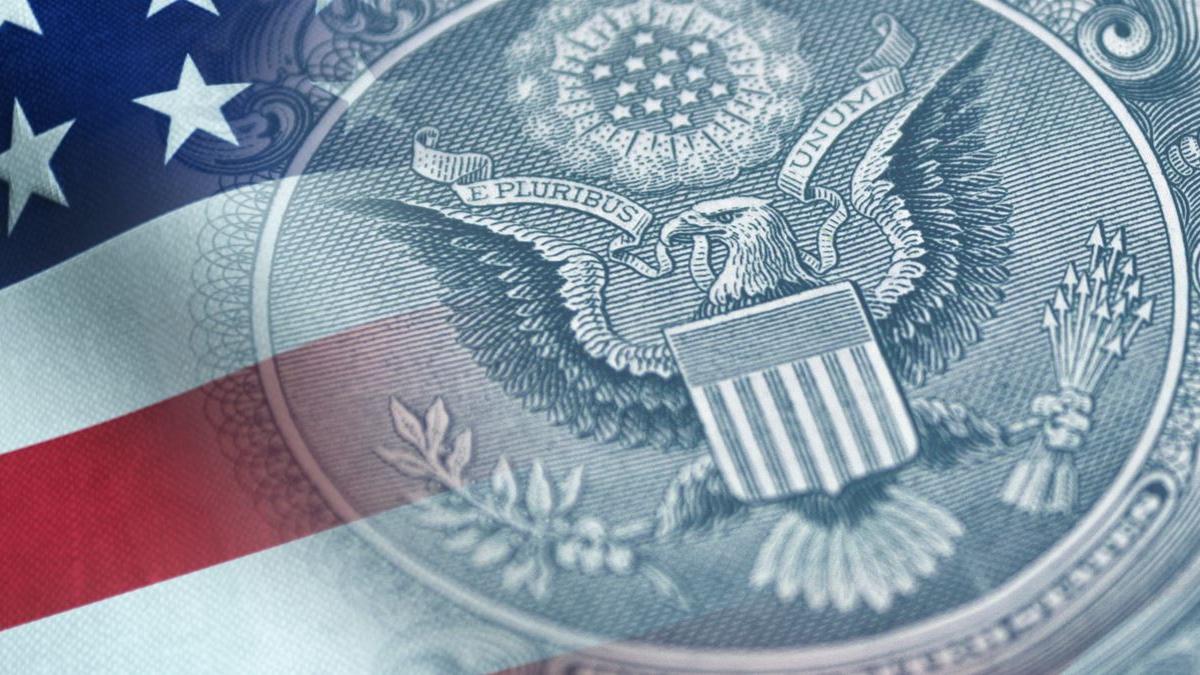
[Originally published by Law and Liberty.]
Those who fail to study the intellectual debates of the past are condemned to repeat them,” is a variation on Santayana’s famous dictum particularly applicable to economics and monetary theory, where ideas cycle along with events. In The Currency of Politics, Stefan Eich has written a valuable and very interesting review of specific monetary debates in their historical settings during centuries of thought about the nature of money as it is entwined with politics. The author’s own recommendations, however, are sketchy and betray a naïve faith in governments. The historical survey does inexplicably leave out the intense debate of “the money question” at the end of the 19th century in the U.S., starring William Jennings Bryan, which we will fill in at the end of this review.
The Currency of Politics was published in 2022, well timed to be greeted by the Great Inflation in this country, and runaway inflation in other countries as well, which has given rise to a new global debate about central banking, money, and inflation, with the global club of money-printing central banks on the defensive—at least for now. The current arguments and monetary stresses must become a new chapter in any future second edition.
Eich’s principal overall theme is that “money is always already political.” This does seem obviously true. I often point out that the old title, “Political Economy,” was a more accurate term than the current “Economics.” We find economics without politics only in theory, never in reality. Likewise, there is no “Finance,” only “Political Finance.”
One reason this is true is the recurring cycles of financial crises, which inevitably trigger powerful political reactions.
A second reason is that the control of money is extremely convenient to governments, especially to have their own central bank to buy their debt when they are out of money. This was the reason for creating the archetypical Bank of England in 1694. It is an arrangement so advantageous to politicians that virtually every national government has its own central bank now. This is particularly useful in times of war, but also handy in general while running budget deficits.
As George Selgin observed in his 2017 study of the nature of money:
Governments have come to supply currency, and to restrict the private supply of currency and deposits, not to remedy market failures, but to provide themselves with seigniorage and loans on favorable terms. Government currency monopolies…can thus be understood as part of the tax system [and reflect] the preference of the fiscal authorities.
This ability of the government to use its control of money for fiscal purposes is precisely what appeals to practicing politicians when they want to spend more, and to a statist academic like Eich, who wants “more precisely political control over money” and “to reconceive of money as a malleable political institution,” in order to have “more democratic visions,” although the “visions” are fuzzy.
In support of his true, but hardly surprising, theme that money is political, Eich goes back to Aristotle. He says Aristotle thought that “money could be an institution that would contribute to the cohesiveness of the polis—but one that was insufficient, imperfect and laden with potentially tragic consequences.” Indeed, such tragic consequences have been experienced by every victim of the hyperinflations that numerous governments have visited on their populations, and as are being experienced today, for example, with Argentina’s reported 71% inflation rate in July 2022.
From Aristotle, the book leaps two thousand years ahead to another great philosopher, John Locke, and in my view, becomes more interesting. The setting is the debate about the great British recoinage of 1696, two years after the founding of the Bank of England, in which Locke was an original shareholder. Famous for his influential political philosophy and theory of knowledge, Locke, as Eich recounts, was also a key monetary thinker. (That was left out of my philosophy courses, and I’ll bet is equally news to many others. As Eich comments, “today political theorists rarely engage with his monetary writings”—bravo to Eich for doing so.) At the same time, the towering scientific genius, Isaac Newton, was also involved in monetary affairs, as he became Warden of the Royal Mint in 1696. He was made Master of the Royal Mint in 1699, a post he held until his death in 1727.
Locke becomes a principal intellectual antagonist in the book for proposing “that the government call in all the circulating currency [that is to say, coinage] and recoin it to affirm its official silver content as originally set in Elizabethan times,” a century before. Eich writes, “For Locke, a pound sterling was and had to remain neither more nor less than three ounces, seventeen pennyweights, and ten grains of sterling silver.” This was in order “to restore trust in the monetary and political system.” The historical outcome was that “to the surprise of many, Locke’s novel insistence on the unalterability of the [monetary] standard carried the day… Parliament passed the act in January 1696…clipped and worn coins were removed from circulation and replaced by newly minted coins with milled edges…[accompanied by] the new emphasis on coins’ inviolable intrinsic value.”
Eich considers this an attempt to “depoliticize” money, but fairly points out that “Locke’s intervention was itself political.” Indeed, sound money, like inflationary money, is itself a position in Political Economy about what monetary system is best.
After Locke, Eich moves on to the German Idealist and nationalist philosopher, Johann Gottlieb Fichte, a theorist more to his taste. Fichte “set out the most incisive plea for…the political and philosophical implications of the new possibilities of fiat money,” which he believed would require a “closed commercial state” which cuts itself off from all foreign trade “with external commerce banned,” and “commercial autarchy.” Further, it would be “a state that enjoyed the full trust of its citizens had at its disposal the full powers of modern money,” and—an expansive claim by Fichte—“it would ensure for all time the value of the money distributed by it.” Needless to say, in a world of monetary politics, the probability of that is zero. A permanent related question is whether it is ever wise to trust the government in monetary affairs.
Eich is well aware that others doubt (as I do) that the state can or should be so trusted. But could fiat currency work anyway? That it could, at least for a while, was shown by a key historical event: the suspension of the convertibility of its notes by the Bank of England in 1797, in order to help finance England’s war against Napoleon. (A hundred years before, the Bank of England had been set up to finance England’s wars against Louis XIV, and one hundred years later, the Federal Reserve first made its mark financing American participation in the First World War.)
Eich’s discussion of this period is extremely interesting to us denizens of the current pure fiat currency world. Like President Nixon on August 15, 1971, the British government on February 26, 1797 “issued a breathtaking proclamation…The Bank of England had suspended…The pound sterling, still in name referring to the weight measure of silver, had become a piece of paper backed only by the word of the state.” This was “a dramatic opening of a now largely forgotten episode in global monetary affairs…from 1797 until 1821, Britain experimented with the most advanced monetary practice in the world—pure fiat money,” Eich says, “and with it the politics of modern central banking. [This] challenged and transformed not only reigning conceptions of money, but also the nature and role of the modern nation state.”
Like the United States in 1971, Britain in 1797 had little choice about this dramatic move—they were both running out of the gold they had promised to pay on demand to their creditors. Here was the British situation:
“The latter part of 1796 had brought a new wave of failures of mercantile and banking houses all over the country. The apprehension of a French invasion heightened the alarm, and when in February 1797 a single French frigate actually landed 1,200 men in Fishguard in Wales, a run on the Bank of England started.” Think of that. According to Hayek, “[Prime Minister] Pitt, being informed of the state of affairs by a deputation from the Bank…forbade the directors, by an Order in Council [from] issuing any cash payments.” The prohibition lasted more than two decades.
Eich emphasizes that “for the first three years prices stayed almost completely stable.” But they didn’t stay that way after that. You have to go to footnote 85 of his Chapter 3 to find that “Over the next two decades…prices rose overall by about 80%.” Eich comforts himself with the thought that this was only “an annualized rate of less than 4 %.” He apparently did not do the math of compound growth rates. At an inflation rate of 4%, prices will multiply by 16 times in a lifetime of 72 years.
Likewise, in our own fiat currency days, after a period of central bank self-congratulation for “price stability,” prices have also not stayed stable, to say the least.
In the historic British case, “a lively debate ensued,” famous to students of monetary history. If we get to footnote 86 of Chapter 3, we find that “The most important English contribution to the debate… was that of Henry Thornton’s An Enquiry into the Nature and Effects of the Paper Credit of Great Britain.” Unfortunately, Thornton does not make it into the book’s main text or appear in its index. We may remedy this lack with two of Thornton’s essential conclusions:
That the quantity of circulating paper must be limited, in order to the due maintenance of its value, is a principle on which it is of especial importance to insist.
To suffer…the wishes of the government to determine the measure of the bank issues, is unquestionably to adopt a very false principle.
At the end of the classic monetary debate in which Thornton played an important part, and with Napoleon well and truly defeated, Britain went back to gold convertibility in 1821.
As the book proceeds, Eich devotes a chapter to his real hero, John Maynard Keynes, and one to the other principal intellectual antagonist of the book, Friedrich Hayek. These chapters have much history of interest—for example, how in 1925 Keynes rightly advised Chancellor of the Exchequer Winston Churchill not to go back on gold at the old, pre-War parity, because the War had destroyed the parities of the old gold standard for good. How Keynes proposed at the Bretton Woods Conference in 1944 the impractical creation of a global central bank and an international fiat currency, “Bancor,” but was representing Britain, which was by then a broke debtor nation and a loser in the argument. The world moved on to the Bretton Woods system based on the U.S. dollar with inter-government gold convertibility, which collapsed in 1971. And on the other side, how Hayek intellectually led “the devastatingly effective politics of the 1970s, which not only paved the way to disinflationary discipline, but also effectively buried Keynes, at least until…2008,” and how Hayek suggested “depriving governments of their monopolistic control of money.” Eich views that as the renewed heresy of “depoliticization” of money.
Eich likes Keynes’ 1930s proposal for zero interest rates which would bring “the euthanasia of the rentier.” However, when in our day central banks imposed zero interest rates, they brought instead the “euthanasia of the saver” and for the rentiers created giant profits by asset price inflation in their bond and stock portfolios.
In the Epilogue to the book, Eich explains, “Following past thinkers…is not meant to produce a catalogue of answers.” Still, he mentions a few suggestions, none spelled out and none, in my view, of much interest, like bringing back postal banking or making the Federal Reserve into a government lending bank. He wants “the greater democratization of money power,” but suggests the anti-democratic need to shield monetary decisions from “the whims of public opinion.”
As a summary thought, he hopes that his history will help “by providing a better language to capture the politics of money, including its promises and limitations.”
The most surprising thing about The Currency of Politics is that the great American monetary debate in which “the money question” dominated national politics, and particularly the presidential election of 1896 with the stirring oratory of William Jennings Bryan, gets not a single mention. Yet its focus was precisely the politics of money in a clear, dramatic, and historic fashion.
Bryan—“that Heaven born Bryan, that Homer Bryan, who sang from the West,” according to the poet Vachel Lindsay—thrilled the Democratic National Convention of 1896 with his “Cross of Gold” speech, the high-flying rhetoric of which was an attack on the gold standard and the promotion of an explicitly inflationist monetary program by the free coinage of silver. One commentator, with some exaggeration, calls it “the most famous speech in American political history.” It is surely the most famous American speech on monetary policy.
Says one history, Bryan “leaped to the speaker’s stand two steps at a time,” and “appeared like a Democratic Apollo.” He proclaimed “that the issue of money is a function of the government, and that the banks should go out of the governing business”—a proposition to which Eich would subscribe. After much more, which I wish we had space to quote, Bryan reached his unforgettable conclusion:
We shall answer their demands for a gold standard by saying to them, “You shall not press down upon the brow of labor this crown of thorns. You shall not crucify mankind upon a cross of gold!”
Bryan got three runs for the U.S. presidency and lost three times. Whatever your views on the substance of his ideas, he certainly gave us notable rhetoric. Eich might add it to his study while he searches for “a better language to capture the politics of money.”








